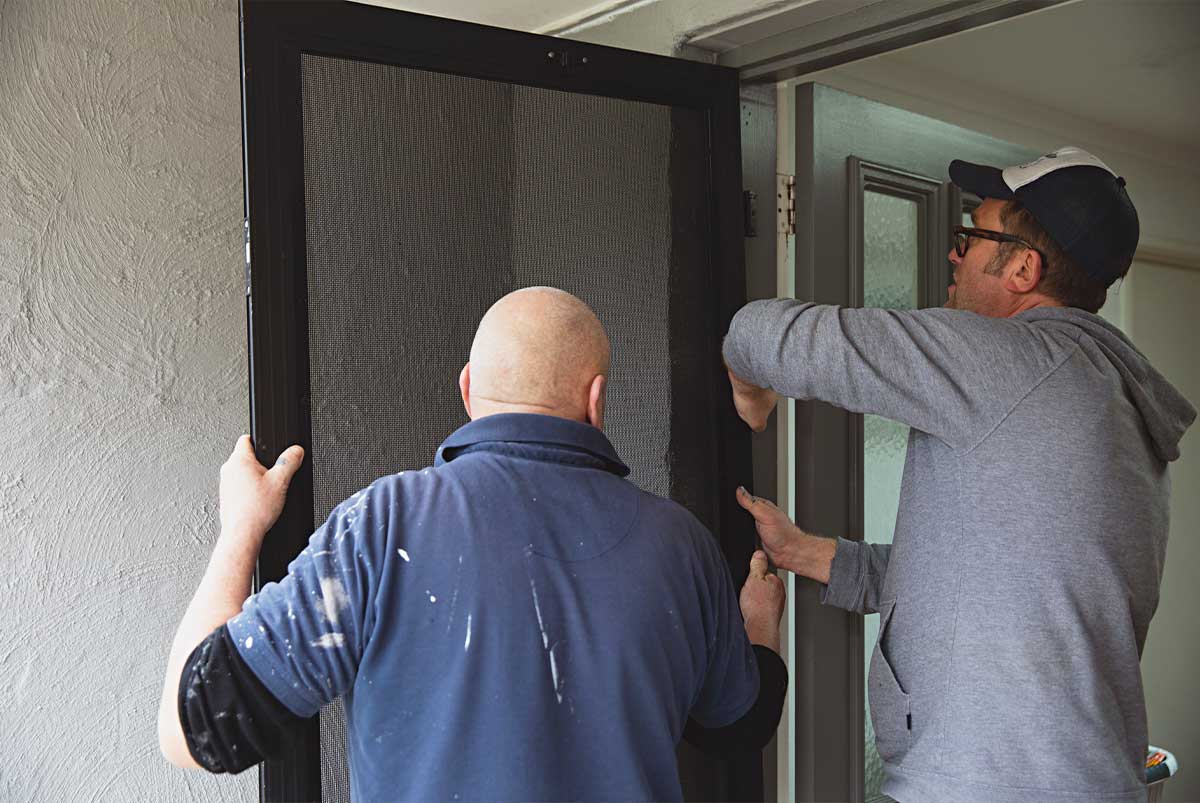Ready To Buy a Home?
Get Approved to Buy a Home
Rocket Mortgage® lets you get to house hunting sooner.
Let’s say you’ve found the perfect fixer-upper, and you think you can turn it around with a few months of work. All you need is money – money to acquire the property, invest in supplies and pay contractors to make the repairs and upgrades you can’t make on your own.
While you may have gotten a home loan for a primary residence in the past, lenders treat loans differently when you use them to flip real estate.
The good news is that there are options to finance a flip, and we’re going to cover those options in this article.
Home Flipping Loan Basics
When you take out a traditional mortgage, you might get a loan that lasts 15 – 30 years. This makes sense because you’ll probably be living in the home for at least part of that time before you sell it.
So, if you want to flip homes, you need a different type of loan. Loans to flip homes account for the fact that you probably won’t be staying in the home for long, and you’ll likely need extra money to finance repairs and improvements.
For these reasons, house flipping loans are structured differently. A house-flipping loan:
- Usually has a 6- to 18-month term – the average term is 1 year
- May only require interest payments over the life of the loan with a balloon payment at the end of the loan (In other words, at the end of the loan’s term, the lender will expect you to make one large payment on the outstanding loan balance, including interest.)
- Require a down payment that is at least 10% of the home’s current value or 25% of the home’s potential value
How To Qualify for a Loan To Flip Houses
The requirements for loans to flip houses aren’t that different from the requirements for traditional mortgages. If you’re looking for a fix-and-flip loan, most mortgage lenders require credit scores over 620, but some lenders may be flexible about the credit score requirement if you meet other criteria, such as a favorable debt-to-income (DTI) ratio and larger down payment.
Be prepared to provide bank statements, tax returns and proof of income. Knowing the anticipated after-repair value (ARV) of the home might help you in this scenario, too.
If the ARV isn’t favorable, the bank might not approve you for as much funding as you’d like, or the bank could deny the loan.
Can inexperienced house flippers qualify for a loan?
Lenders might shy away from you if you’re an inexperienced house flipper. The first home is always the hardest to flip because your financing options are limited, and you may pay higher interest rates.
Once you’ve successfully flipped your first home, your financing options can start to open up. Lenders just want to know that you’ve got the skills to fix and sell a house before they give you a loan. Once you’ve completed your first sale, that helps establish you as a safer bet.
Things To Consider About Fix-and-Flip Loans
It’s practically impossible to flip a home on your own. Think about the kind of assistance you’re going to need. Before you decide to flip your first home:
- Create a business plan: The plan should include your plans to find the right house to flip, the anticipated cost of renovations and the project’s estimated budget. Estimate the home’s purchase price and calculate closing costs, real estate agent fees and taxes.
- Consider your risks: Think about your tolerance level for carrying certain types of debt, such as a hard money loan to finance the house flip. Remember, the first house is usually the most difficult one to get financed. If you haven’t flipped a house before, you’ll need to prove yourself to lenders.
Find a team: Consider building a network of contractors, real estate experts and lawyers you can turn to throughout the process.
How Much It Costs To Flip a House
To make sure you don’t overspend on repairs or undersell the home, you should plan the project in advance. There are lots of costs to consider, including home insurance, closing costs, taxes, fees and marketing.
Whether you use a real estate agent to list your home or try to sell it yourself, it costs money to draw the interest of potential buyers.
You should build a buffer in your budget. Sometimes fix-and-flip projects have a way of not going as planned. You may wind up spending more on renovations or absorbing the cost of unexpected legal fees. Home flippers use the 70% rule to protect their investment and make sure they can at least get back what they put into the project.
Types of Loans for Flipping Homes
The right type of loan will depend on the type of collateral you have, your credit history and your debt-to-income (DTI) ratio.
Here are the most popular types of loans house flippers can use to fund their projects:
Cash-out refinance
If you already own a home, you can use a cash-out refinance to get better terms on your existing mortgage loan and get money for your fix-and-flip. A cash-out refinance would pay off your existing mortgage and let you borrow up to 125% of the current appraised value of the home.
Keep in mind that the amount of cash you receive is based on the amount of equity in your home. For example, if you took a $150,000 loan out on your house and paid $50,000 toward the principal, your home is now worth $200,000, and you’ve built up $100,000 in equity.
Using the same example, if the lender approved you for 125% of the home’s current value, you could refinance the house with a $250,000 loan, allowing you to pay off the original $100,000 you owe and get $150,000 in cash. But this also means you have a new $250,000 mortgage to pay off – so borrow with care.
FYI: borrowing 125% of your home’s appraised value isn’t guaranteed. Your lender will determine the percentage of your home’s value they’re willing to lend based on your credit history, your outstanding mortgage balance and your income.
Home equity loan
Home equity loans for flipping houses also use the equity you’ve built in a home you already own as collateral. You keep your existing loan and still make payments on it while taking out a separate loan against your available equity, paying it back at a fixed interest rate in regular monthly installments (usually over 5 – 10 years).
Home equity loans are also referred to as second mortgages because you pay both loans every month.
The advantage of a home equity loan is that you know what you can borrow upfront and the loan’s interest rate is fixed. (Sidebar: Don’t forget to factor the interest on the loan into the total cost of your project to make sure you come out ahead after you sell.)
One of the biggest disadvantages to taking out a home equity loan is that if you miss payments, you could lose your home.
Also, most lenders only let you borrow up to 75% – 85% of your home’s value. You’ll probably need more than 70% equity in your home to make taking out the loan worthwhile.
Home equity line of credit (HELOC)
Sometimes a little more flexibility is a good thing. If you’re looking to cover yourself in case your project goes over budget or you want to take a chance with variable rates, a home equity line of credit (HELOC) can help, assuming you already own a property.
A HELOC is another type of home equity loan. It provides you with a revolving line of credit instead of a lump sum of cash.
HELOCs have some useful benefits, including low closing costs, the ability to take out as much or little money as you need and only paying interest on the money you’ve withdrawn.
For example, if you’re approved for $200,000 but only need $140,000 to purchase the property, that leaves $60,000 to play with. You can draw from that outstanding pool of money whenever you need to, but if you can find ways to save during the renovations, you won’t have to use the entire $60,000.
With a HELOC, you withdraw money during the loan’s draw period (it’s usually 10 years). While you’re in the draw period, you only pay interest. You don’t pay down on the principal while you’re fixing up the house.
House flippers usually fix and sell homes in less than a year, so you won’t reach the end of the draw period before you sell the house.
The main disadvantage with a HELOC is that your interest can change periodically depending on current market rates. If the Federal Reserve raises rates, the bump in interest could wind up costing you more money. Check out our guide for more information on home equity loans and HELOCs.
Hard money loan
Hard money loans are also called bridge loans. They’re usually the last resort for home flippers. Banks and credit unions typically don’t offer hard money loans, but some companies can finance your project as long as you have enough collateral to reduce the lender’s risk.
The repayment term for a hard money loan is between 1 and 3 years. They’re used primarily by real estate investors or borrowers who anticipate inheriting property soon and plan to use the money to settle debts or pay off other heirs to the property.
You’ll pay more interest with this type of loan, but the approval process is much faster for hard money loans than it is for other types of loans. The lender may be only willing to offer 50% – 70% of the home’s appraisal value. But if you’re an experienced flipper, you may be able to negotiate a higher limit.
Creative Funding for Flipping Houses
If you’re not interested in borrowing money from a bank or other lender, there are other options available for motivated house flippers.
Private lenders or investors
Keep your ear to the ground and find people who are offering to lend money at better terms than you would find elsewhere.
Rather than get a loan, get an investor. Some people want to flip homes, but don’t have the time or interest in doing all the legwork.
These types of investors may be private lenders. They are usually business owners or people with lots of money who want to make a substantial return on their savings.
Real estate investors might agree to pony up the cash as long as they get a cut of the profits.
First, think long and hard about giving up some of your return on investment in return for financing. And second, make sure any agreement you make is reviewed by an attorney.
Family and friends
It never hurts to ask family and friends if they’d be willing to fund your project. Even if they can’t provide financial assistance, they may be willing to help in some other way, including visiting properties with you or picking up a hammer and working alongside you.
401(k) financing
You can use your 401(k) to fund your project. The CARES Act has removed the penalty for early withdrawals from eligible retirement accounts up to $100,000.[2] If you borrow more than $100,000, the 10% early withdrawal penalty will kick in. And no matter how much you take out, you’ll pay taxes on what you withdraw.
A 401(k) withdrawal is a solid option, but is it a retirement-savvy one? Pulling money out of your account before retirement could have a huge impact on how much money you’ll have saved during retirement.
An alternative to early withdrawal is a 401(k) loan. You borrow money from your 401(k) and agree to pay it back in monthly installments. However, there are stricter limits on the amount you can borrow with a 401(k) loan, so make sure it will be enough to meet your home flipping needs.
Seller financing
If you can’t get approved through a bank or credit union, consider seller financing. When the seller has full ownership of the property or they can get their lender to approve the terms, the seller is the one that gives you the loan.
Instead of paying a mortgage, you make monthly payments to the seller. Most of these loans require a balloon payment after a short loan term – which makes them perfect for house flipping.
Seller financing is risky for sellers, so expect to pay a higher interest rate. Sellers will typically require the full asking price of the property if they agree to finance the loan. And it may be difficult to find a seller who doesn’t need a lump-sum payment to pay off their existing mortgage.
On the plus side, it takes less time to close on these types of sales, and your closing costs may be less expensive.
Is Fix-and-Flip Financing Right for Me?
Loans for house flipping don’t always have favorable terms, but you can usually justify them with the profits from successfully flipping. According to the National Association of REALTORS®, the national median price of homes rose nearly 15% in the fourth quarter of 2021 compared to the prior year.[3] This might be an indication that it’s still a good time to fix and flip a home.
The process can get much easier after you’ve flipped your first home. To successfully flip for the first time, be knowledgeable and confident about the financing you choose and have a business plan in place before you embark on your house-flipping adventure.
Take the first step toward buying a home.
Get approved. See what you qualify for. Start house hunting.
The Short Version
- Home flippers use the 70% rule to protect their investment and make sure they can at least get back what they put into the project
- You can get the money to flip homes from private banks, credit unions, hard money lenders, fintech companies and crowdfunding services
- While you can use a conventional loan to flip a house, it requires cash assets or another property to secure the loan
Federal Deposit Insurance Corporation. “203(b) Mortgage Insurance Program.” Retrieved March 2022 from https://www.fdic.gov/consumers/community/mortgagelending/guide/part-1-docs/203b-mortgage-insurance-program.pdf
U.S. Senate. “The Cares Act.” Retrieved March 2022 from https://s3.documentcloud.org/documents/20059055/final-final-cares-act.pdf
National Association of REALTORS®. “Single-Family Home Prices Rose in 67% of 183 Metro Areas in 2021 Q4.” Retrieved March 2022 from https://www.nar.realtor/blogs/economists-outlook/single-family-home-prices-rose-in-67-of-183-metro-areas-in-2021-q4




